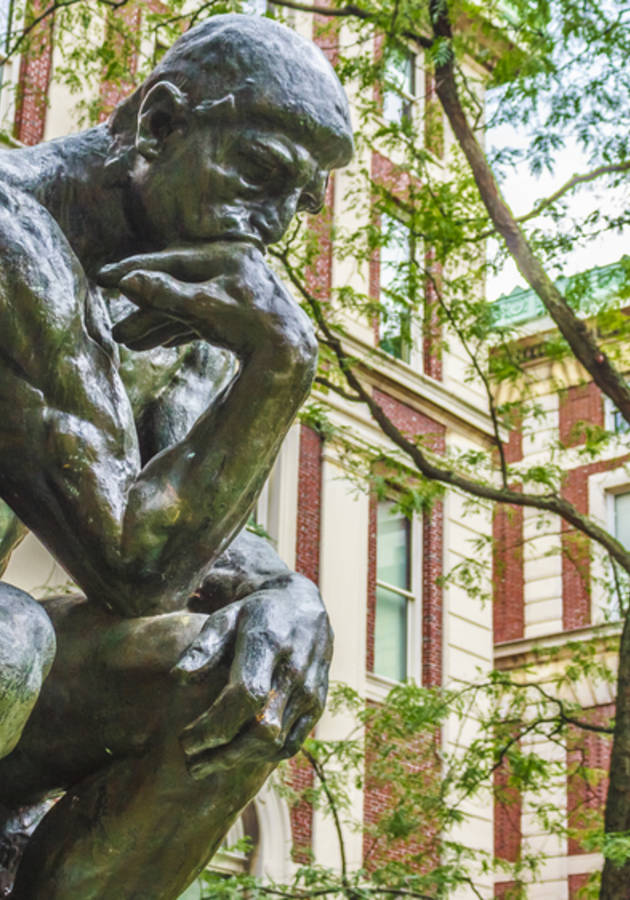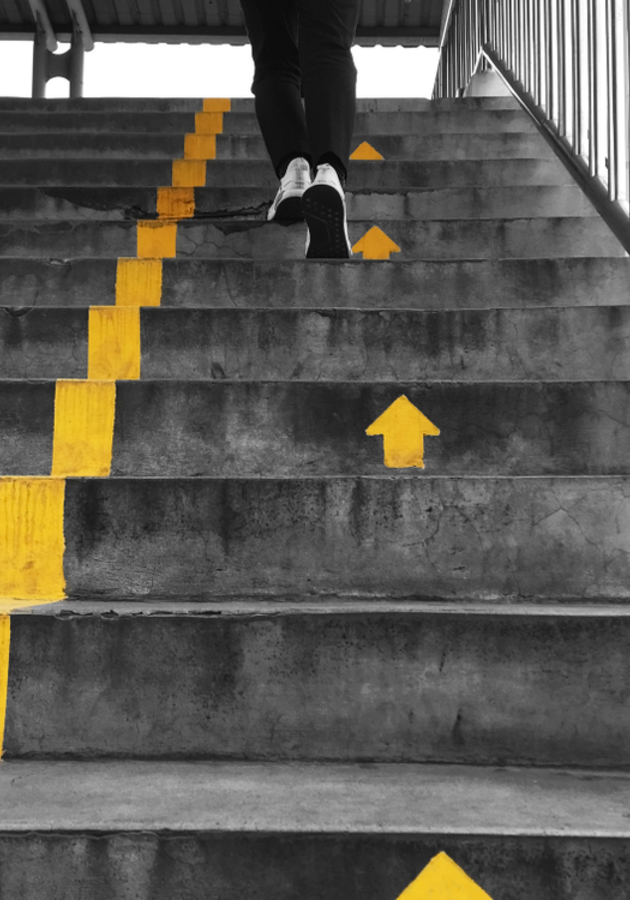The ancient Greeks had an interesting saying: “wisdom arises from suffering.”
Unlike them, who spent the entire year of 500 B.C. debating it, Gautama Buddha made this apothegm the fundamental tenet of his philosophy around the same time at ancient India.
According to him, suffering – dukkha, as he called it – together with impermanence and non-self, is one of the three marks of existence and the very first of his “Four Noble Truths.”
Two and a half millennia after Buddha, modern Zen Buddhist experts and prominent neuroscientists say that he may have been onto something very basic about human nature.
In “Thoughts Without a Thinker,” Mark Epstein, a renowned American psychotherapist, has his say on the subject.
And, once again, we’ve prepared a neat summary for you.
Freud’s Eros and Thanatos are a snake and a rooster
Sigmund Freud was interested in many things. He wasn’t, however, interested in Buddhism. Yet, as Epstein shows, when it comes to truth, the paths may be many, but the truth will always be the same. In other words, even though Freud knew nothing of Buddha, he discovered some things eerily similar to the ones the Indian had already uncovered.
For example, Buddha believed that we are unable to understand ourselves because of three things: desire, anger, and delusion. Represented by a snake, a rooster, and a black hog respectively – all of which are biting each other’s tails in Buddhism’s Wheel of Life – these three feelings were at the center of Freud’s psychoanalytic interests as well. He just named them differently.
For example, in Freud’s work, the snake of desire corresponds to Eros or the “life drive.” It’s what makes us strive for pleasant experiences and reject pain. It’s also what stops us from seeing our true selves.
The rooster of anger is equivalent to Freud’s Thanatos or the “death drive.” It’s the instinct that makes people do crazy things such as bungee jumping and boxing. Think of a situation when someone yelled at you. What you repressed at the moment was your “death drive.”
Finally, the black hog of delusion! Unsurprisingly, it is central to both Buddhism and psychoanalysis. It symbolizes the idea that we have of ourselves, which is – of course – a wrong depiction of what we are. We don’t really know ourselves because we deliberately try to create a different self every time an unpleasant situation arises. And this goes way back!
You left your Garden of Eden the moment your mother stopped breastfeeding you.
Up to then, you were sheltered and safe. Everything that happened afterward – sorry to break this – is basically you piling a lie after lie to prevent yourself from perceiving your self accurately.
Now, why would you do that?
Simply put, it is easier to concoct a story of all the things that supposedly prevent you from experiencing self-fulfillment than actually attaining it. And it is even easier to wrap your traumas in a blanket of fake stories than face them head-on.
The origin of psychological disorders
Unfortunately, as much as that can help, it is also how psychological disorders develop.
Disorders are the direct result of the friction between your actual self and the selves you created for yourself. Your most authentic self, ancient as it is, would rather scream and run around naked 9 out of 10 times. Your social self, however, obliges you to wear a suit and talk calmly in all those cases. In time, the tension may become overbearing. And there’s no way out!
Even at this very moment, while you’re reading this, your self is not aligned with who you really are. Most of the time, it is either inflated or deflated. The radicalization of either of these impulses results in two prevalent disorders: narcissism and depression.
If you are narcissistic, you believe that you are at the center of the world and that everything revolves around you. Our age, on the whole, is very narcissistic: it teaches us to be radically individualistic and feeds us with the idea that we must be better than the others, since everything is a competition.
Unable to bear this tempo, many people eventually end up trading this sense of inflated self for something fundamentally different: depression. People with a deflated sense of their selves have a feeling that nothing they do really matters and, in many cases, would rather not exist at all.
Both narcissism and depression are a direct consequence of you feeding yourself the wrong stories.
The solutions: psychoanalysis vs. Buddhism
When a student named Vacchagotta asked Buddha if the self existed, the great thinker remained silent.
According to Epstein, that was his way of claiming that whatever he says would merely be a reinforcement of the self. Staying silent allowed him to be above the situation, to simultaneously give an answer to the question and leave the question open-ended, to both transcend and negate the existence of his self.
And that is all Buddhism ever speaks about: how you can free yourself from your self.
You already know the basic equation: meditation + compassion = relief. Mediation can help you negate your self by quieting it. Compassion can negate your self by sacrificing it for others. It is precisely through these techniques that Easterners have achieved mindfulness and humility.
Westerners, on the other hand, are constantly struggling with desire, loneliness, and delusion. Buddhists have a term for this state of existence: “hungry ghosts.” Does it sound eerie enough already?
Unfortunately, it is more than a metaphor: it is deeply rooted in our realities.,It's not only the point in which Westerners and Easterners differ with each other, but also where psychoanalysis and Buddhism take separate paths.
Unlike Buddhism, psychoanalysis doesn’t try to cancel out the self; it tries to uncover it. According to Epstein, that’s just the selfish way of the west: overanalyzing things to find an impractical answer that helps nobody.
Even though at first sight much more idealistic, Buddhism is by far the more pragmatic worldview when it comes to finding a way out of the vicious circle of day-to-day suffering.
According to the author, that happens because it isn’t afraid to tackle the real problem. Since, ultimately, it is more interested in finding a solution than finding the self.
Bare attention: John Cage and openness
Even if you have never heard of John Cage, you probably know at least something about his work. He’s the guy who wrote 4′33″, a three-movement composition during which the performers are instructed not to play their instruments.
So, it’s just four minutes and thirty-three seconds of silence, interrupted by a cough or a sneeze from the audience here and there.Finding music beneath the music? “Transcending” and “negating” sounds at the same time? Sounds Buddhist enough? It should, because John Cage was immensely influenced by Buddhism.
“If you develop an ear for sounds that are musical, it is like developing an ego,” he said in one interview. “You begin to refuse sounds that are not musical and that way cut yourself off from a good deal of experience.”
So, Cage spent years and years practicing the art of bare attention, staying open to everything until he was able to accept it. And that is how he went from hating loud sounds such as car alarms and burglar alarms to not only becoming tolerant of them but even enjoying them.
Bare attention: diminishing reactivity
If you didn’t understand by now, the whole story above is a metaphor one that captures the Buddhist way of handling a person’s emotions.
Psychoanalysis tries to delve deep into the matter. When in therapy because of a love problem – say, your ex not returning calls – your therapist will try to find the root of it. And, usually, the root can be found in your childhood.
For example, one of Epstein’s patients – let’s call him Sid – was temporarily abandoned by his mother when he was six years old. As a grown-up, he wouldn’t allow being abandoned by any of his girlfriends. Every time he was, he felt the same feelings as he did as a child. The result?
He started calling his last girlfriend every night, crying over the phone, becoming so unbearable that, eventually, she – let’s call her Rachel – had to report him for psychological harassment.
After that the usual psychotherapeutic methods didn’t work, Epstein suggested Sid do something very Buddhist: nothing. He just asked Sid to stop being judgmental of his feelings and just let them wash over him.
Sid did just that – and it worked! It hurt like hell, but it also hurt into oblivion. Rather than facing the pain from his childhood years, he transcended it by not reacting to it.
Epstein suggests that this is how one of Japan’s most famous haikus can be interpreted: “The old pond. A frog jumps in. Plop!”
“The waters of the pond can represent the mind and the emotions,” he writes. “The frog jumping in becomes a thought or feeling arising in the mind or body, while ‘Plop!’ represents the reverberations of that thought or feeling, unelaborated by the forces of reactivity.(...) The entire poem comes to evoke the state of bare attention in its utter simplicity,” Epstein concludes.
Mindfulness and the psychodynamics of meditation
True, humans are exceptional species, but we’d be a lot better if we realized that our exceptionality is often the root of our problems.
As far as we know, no other animal is capable of suffering the way Sid did, and that’s because of things that happened in the past. All of them are living the present, and at the very minute a zebra escapes a lion, its life goes on just as usual. With us, such a near-death experience would have probably scarred us for life.
Buddha intuitively realized this long, long ago. He understood that a human only feels alienated when mind and body are not in tune.
And they can only be in tune in the present: no matter how much you try, your body won’t feel like 17 years old if you’re in your 60s. So, the organ that needs syncing is your brain: it needs to start living the present as soon as possible.
That’s where mindfulness and meditation come in. They are two techniques that help bring your mind up to date. Fortunately, you can (and should) practice regularly.
For example, whenever brushing your teeth, instead of thinking about everything else,start thinking precisely about the feeling of the toothbrush on your gums.
Do the same when you’re breathing (focus on your breath), and soon your thoughts will quiet down, and everything will become calm and clear.
That’s mindfulness/meditation 101 for you, right there!
Final Notes
“Thoughts Without a Thinker” is a book that tries to combine two seemingly disparate worlds: Western psychoanalysis and Buddhism. And it does an excellent job!
The book is thought-provoking, but, unfortunately, it is written in much more technical and much less reader-friendly style when compared to some other books by Epstein. As a result, we guess that the book should be a little more interesting to someone who knows a bit more about Freud than to the general public.
But, don’t take our word for it and do read it! Many people say that the lessons in this book genuinely helped them. And, let’s face it, the book is recommended by someone much more trustworthy than us on all Buddhism-related matters. The Dalai Lama. And how many authors can say that their book has a foreword written by the Dalai Lama himself?
12min Tip
Be open and non-judgmental. Half of the problems in your life are the direct consequence of you reacting instead of observing. Reacting is a corollary of prejudice; observing leads to acceptance.




























